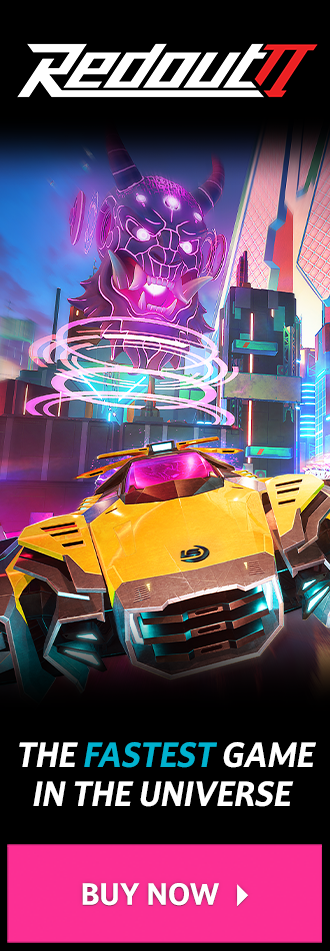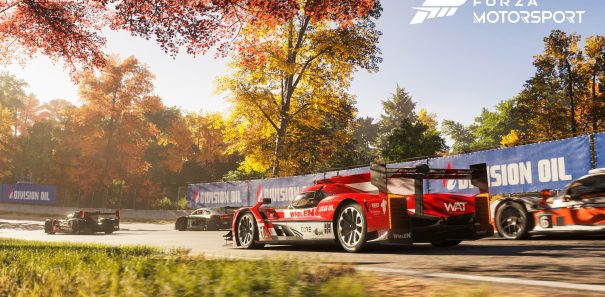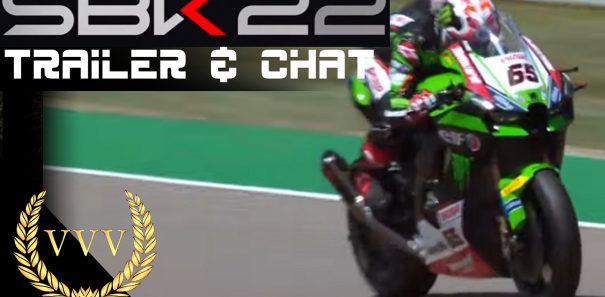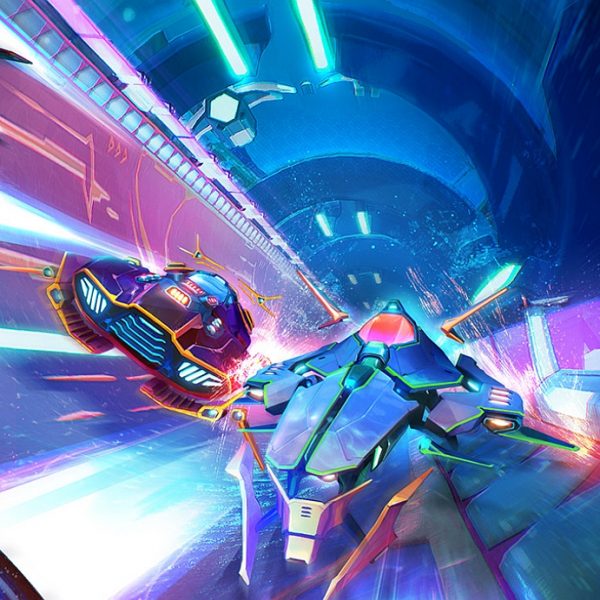It was inevitable that Sébastien Loeb would represent a rally game one day. As the most successful rally driver of all time by some margin with nine world titles to his name, the talented Frenchman is an obvious choice for a rally game mascot, following in the footsteps of the late Colin McRae and Richard Burns who put their names to some of the most iconic rally games ever made.
While Codemasters’ Colin McRae Rally is regarded as the most seminal rally game series of all time, Richard Burns Rally was something of an underdog on release. Initially, it received a poor reception on release as players were turned off by its relentless difficulty, but as years passed it developed a loyal fanbase that appreciated its hardcore credentials, which was rare on console at the time. Today, it’s still supported by the loyal modding community over a decade after its release.
Twelve years after the release of Richard Burns Rally, the rally game market is experiencing déjà vu. After a prolonged drought of rally games, Codemasters recently came back on form with DiRT Rally, while former WRC makers Milestone have made their own comeback with Sébastien Loeb Rally Evo, a new IP two years in the making that has the benefit of being free from the burden of annual release cycles, even if it doesn’t have the instant brand recognition of DiRT. In many ways, you get the feeling that Sébastien Loeb Rally Evo is a game the passionate petrolheads of Milestone wanted to make rather than one they had to make year after year due to contractual obligation with a motorsport license; as was the case with WRC over four iterations.

While DiRT Rally is the closest Codemasters has come to recapturing the spirit of Colin McRae Rally, Sébastien Loeb Rally Evo has the merits of a spiritual successor to Richard Burns Rally, and its influence is prevalent in many aspects of the game design.
Rally superstar Sébastien Loeb worked closely with Milestone to make the game as realistic a representation of rallying as possible, and it shows – Sébastien Loeb Rally Evo is brutally unforgiving. It takes considerable skill, practice and learning of the stage routes and car characteristics to cross the finish line with your car in pristine condition, so don’t be surprised when you overshoot a corner and plough into a nearby ditch or wrap your car around a tree during your first few attempts. And then make the same mistakes several times over after restarting. This is a game where you can legitimately get stuck in the scenery without it being a glitch. If you were looking for an approachable rally game experience, look elsewhere – we already have Kylotonn’s WRC 5 for that.
There are of course some precautions you can take if that all sounds too daunting. Sébastien Loeb Rally Evo’s detailed tutorials are useful for novice drivers, so I highly recommend consulting them to learn the basics. Numerous difficulty levels let you apply preset driving options tailored to your skill level and Milestone’s trademark flashbacks return, allowing you to instantly rewind the action and reset your car to correct your mistakes. You can’t always rely on them, however. There were several occasions where the rewind option didn’t work for several seconds after an incident, and since you can only rewind back up to 15 seconds, the delay meant that I couldn’t respawn before the point of the accident. Frustratingly, you can’t cancel a flashback if this happens either, so it just ends up wasted.
Track mania
Part of Sébastien Loeb Rally Evo’s steep learning curve can be attributed to its superb stage designs, a result of Milestone’s meticulous laser-scanning and GPS data gathering of real roads spanning 300 km. This means that, for the first time in a rally game, each of the 64 stages have been realistically recreated with 1:1 accuracy – WRC’s lazily copy and pasted corners are now mercifully a thing of the past.
Milestone have exceled themselves here: Sébastien Loeb Rally Evo features some of the longest, most authentic and most challenging courses ever featured in a rally game. While recent rally games were often criticised for having stages that were too wide and short to be believable in an effort to make the game more accessible, you won’t find such sacrifices in Sébastien Loeb Rally Evo: in many cases, the stages are barely wider than your car, and stages lasting less than five minutes are in the minority (even the shorter stages are still 5km long), with the clock creeping up to the 10 minute mark in tracks up to 10km long. Coupled with hazardous trackside obstacles such as protruding trees, rocks and dips that can cause your car to instantly overturn if you clip them, navigating Sébastien Loeb Rally Evo‘s demanding stages is a heart-in-your-mouth experience when you know that one mistake can be catastrophic. The unpredictable nature of the stage designs creates a lingering tension too many rally games have lacked. You really have to concentrate and listen to your co-driver if you want to set a fast time.
The Italian rally of San Remo is a particular highlight (predictable, perhaps, given Milestone’s Italian heritage) with its narrow stretches of twisting asphalt, sharp elevation changes and precarious blind turns, as are the high altitude gravel trails of Mexico full of twists and turns to keep you on your toes where one mistake can send your car careering off a cliff. Night stages up the ante even further, debuting in Sébastien Loeb Rally Evo after being disappointingly absent in Milestone’s WRC series. In a possible nod to Evolution Studio’s WRC games on PS2, there’s even an option to free-drive around your team’s headquarters. Sébastien Loeb Rally Evo is an indication of how far Milestone’s stage designs have come since the wide open stages in the early WRC games that were far removed from reality.
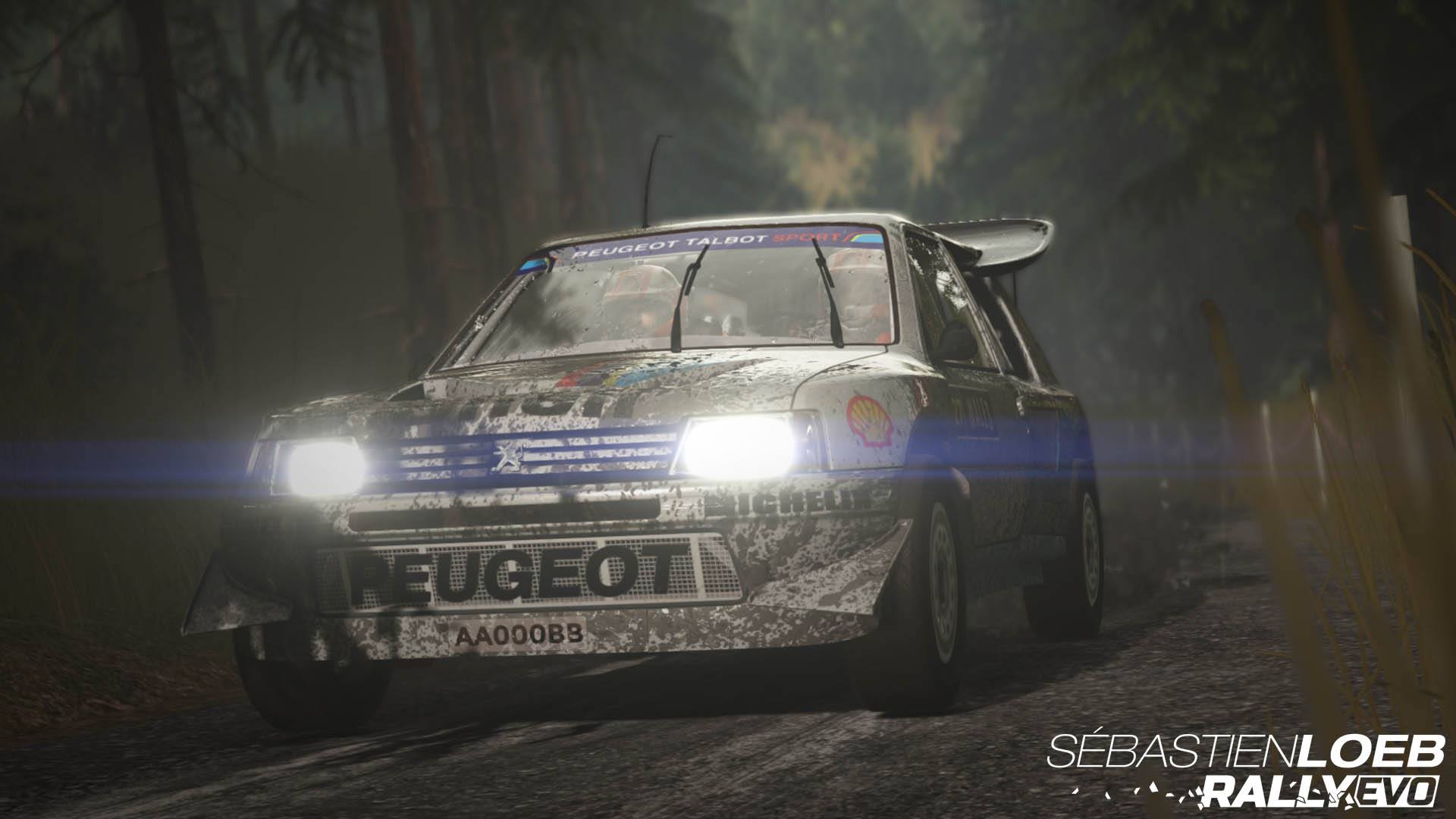
In terms of locations however, Sébastien Loeb Rally Evo falls short against WRC 5, with eight locations compared to WRC 5’s 13. It’s not surprising since WRC 5 has the obvious benefit of being an officially licensed title, but locations such as the the Acropolis Rally of Greece, the German ADAC Rallye Deutschland and Rallye de France, which previously featured in Milestone’s WRC series, are sorely missing. Granted, Sébastien Loeb Rally Evo’s does make up for this shortfall by featuring 300km worth of tracks, but it does mean there is less variety in environments. Future DLC could rectify this, though.
Despite the difficulty, there’s little consequence when you make a mistake other than losing time. Cosmetic car damage is adequate, leaving your battered car with dented panels and shattered windscreens, but the cars in Sébastien Loeb Rally Evo seem to be mechanically indestructible. Spectacular wrecks have little effect on your car’s performance apart from the odd tyre puncture, even on realistic damage settings. Knowing your car can withstand copious damage detracts from the sense of danger significantly. It’s a stark contrast to WRC 5, where a substantial smash could cause terminal engine failure and force you to retire from the stage.
Like the stages, Sébastien Loeb Rally Evo’s car selection is equally exhaustive. Clearly, being freed from the shackles of producing annual WRC games has enabled Milestone to concoct their dream rally car list. The result is a wonderful representation of rallying through the ages.
While Citroen unsurprisingly dominate the car list given Sébastien Loeb’s allegiance with the manufacturer throughout his career, there’s plenty of variety in the 50+ rally car roster spanning four decades. Fans of the notorious Group B era will revel at the inclusion of the Ford RS200, Renault 5 Turbo, Lancia Delta S4, Audi Quattro S1 and Peugoet 205 Turbo. Elsewhere you can get behind the wheel of the iconic Impreza and Ford Focus driven by Colin McRae in the ’90s, to vintage ’70s classics such as the lively Lancia Stratos and Alpine A110 which are a handful to drive on slippery surfaces thanks to their RWD drivetrains.
Cars can also be customised using the now-obligatory livery editor and extensive tuning options allowing you to tweak everything from the brakes and transmission to the suspension. There are enough camera options to satisfy different player’s preferences too, including multiple dashboard cameras: there’s one that depicts your hands clutching the wheel along with a closer view positioned just behind the windscreen like in DriveClub which is an ideal alternative. Sadly, you can’t adjust the distance of the camera – Project CARS has spoiled us when it comes to customisability, so it’s noticeable when such options aren’t available in other games that claim to be realistic. Cars aren’t restricted to events either, so if you fancy a rallycross race in some overpowered hillclimb monsters, go right ahead.
It’s even hard to grumble too much about the post-release DLC car packs, which have added some genuinely interesting obscurities to the already eclectic car list. I particularly like the Class S Prototypes DLC – it’s not often you see a Peugeot Quasar feature in a rally game.
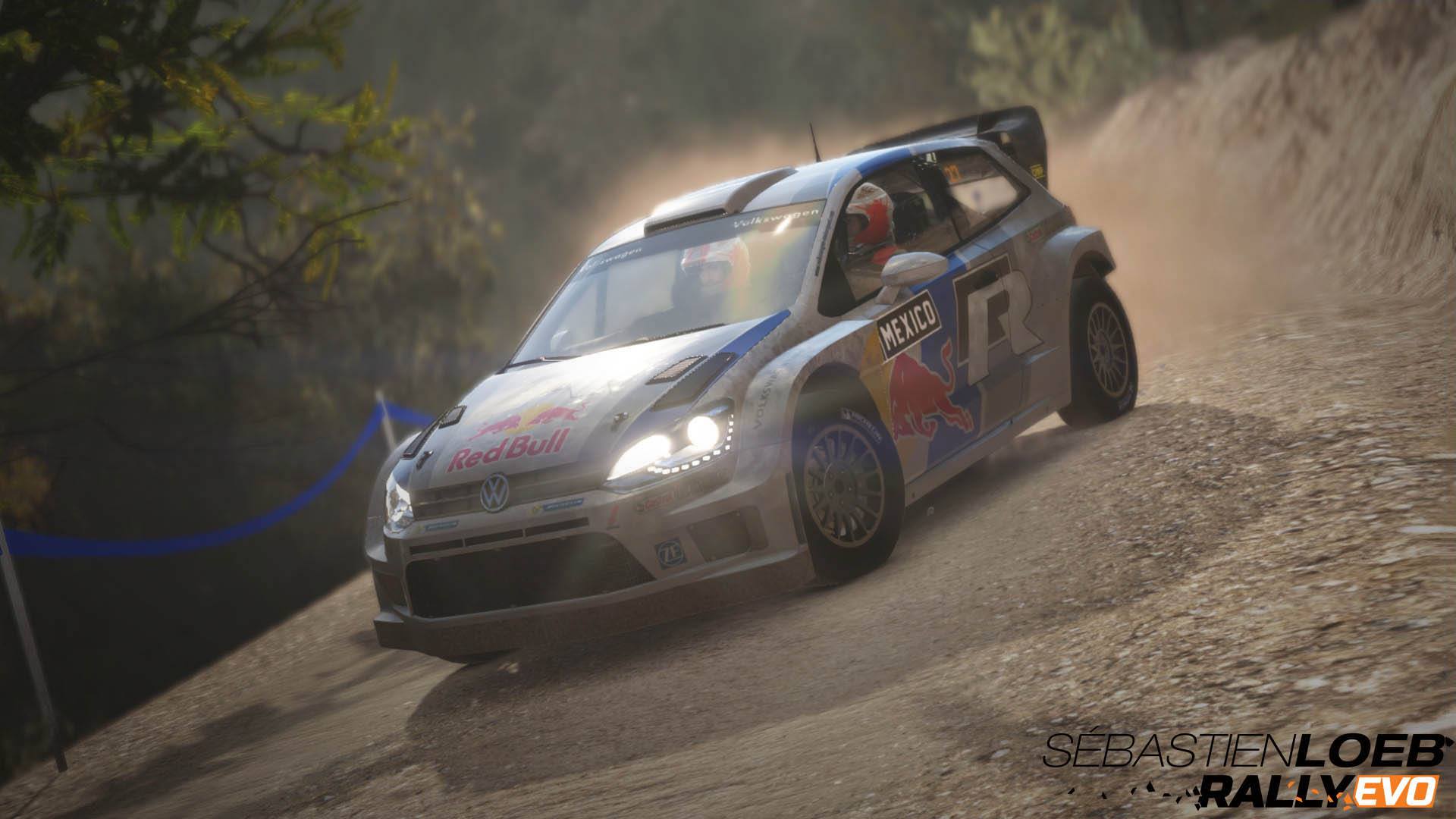
They’re satisfying to drive, too, once you’ve mastered the hardcore handling. Sébastien Loeb Rally Evo leans closer to simulation territory than any Milestone game before it, and it’s a mostly successful attempt at creating a hardcore rally simulation akin to Richard Burns Rally. It’s certainly a step up from the floaty physics from Milestone’s WRC series, with more depth than Kylotonn’s WRC 5’s arcade-friendly physics, no doubt thanks to Sébastien Loeb’s input. There’s a tangible feeling of weight to the cars, allowing you to deploy real rally techniques such as balancing the weight transfer to execute Scandinavian flicks. Every corner requires conservative use of steering, throttle and braking to keep the car in check – this isn’t a game where you can hammer the throttle, chuck the car into the corner and hope for the best.
Milestone have done a particularly sterling job of simulating different surface types, where you’ll feel the acute loss of grip transitioning from tarmac to gravel, snow or wet conditions and adapt your driving style accordingly. Cars that feel heavy and cumbersome with a tendency to understeer on tarmac suddenly become loose and twitchy off-road, allowing you to pull off some glorious powerslides. Like Milestone’s motorcycle IP Ride, the understeer is perhaps too potent at times, though, but the handling of each car is distinct among the different classes – the difference between a 2WD, 4WD and AWD car is very defined.
It’s a pity the same realistic physics aren’t on display when playing with the exterior camera or watching replays. The car animations are far too rigid, with a lack of visual body language to convey how the car is reacting to the surface. It’s so bad that the cars look like they’re gliding off the ground in the otherwise impressive TV-style replays. Likewise, the collision physics can be jarringly erratic, resulting in your car somersaulting through the air at ridiculous speed.
As with any racing simulation, Sébastien Loeb Rally Evo shines when played with a wheel, with crisp force feedback adding a greater sense of weight and grip to the car. I found that switching the wheel rotation settings of my Thrustmaster T300 GTE wheel to 540 degrees made the cars more responsive, as did dialling down the force feedback to around 50% (as with most racing games, it’s set to 100% by default which I find to be too strong but that’s down to personal preference, of course).
Sébastien Loeb Rally Evo also currently doesn’t many of the USB add-ons that many hardcore enthusiasts are likely to own – the Fanatec Clubsport Handbrake is ideal for rally games, yet it doens’t work in Sébastien Loeb Rally Evo.
The handling is still responsive using a controller, if a tad too twitchy at times, but it can’t match the precision of a force feedback wheel when navigating the challenging courses.
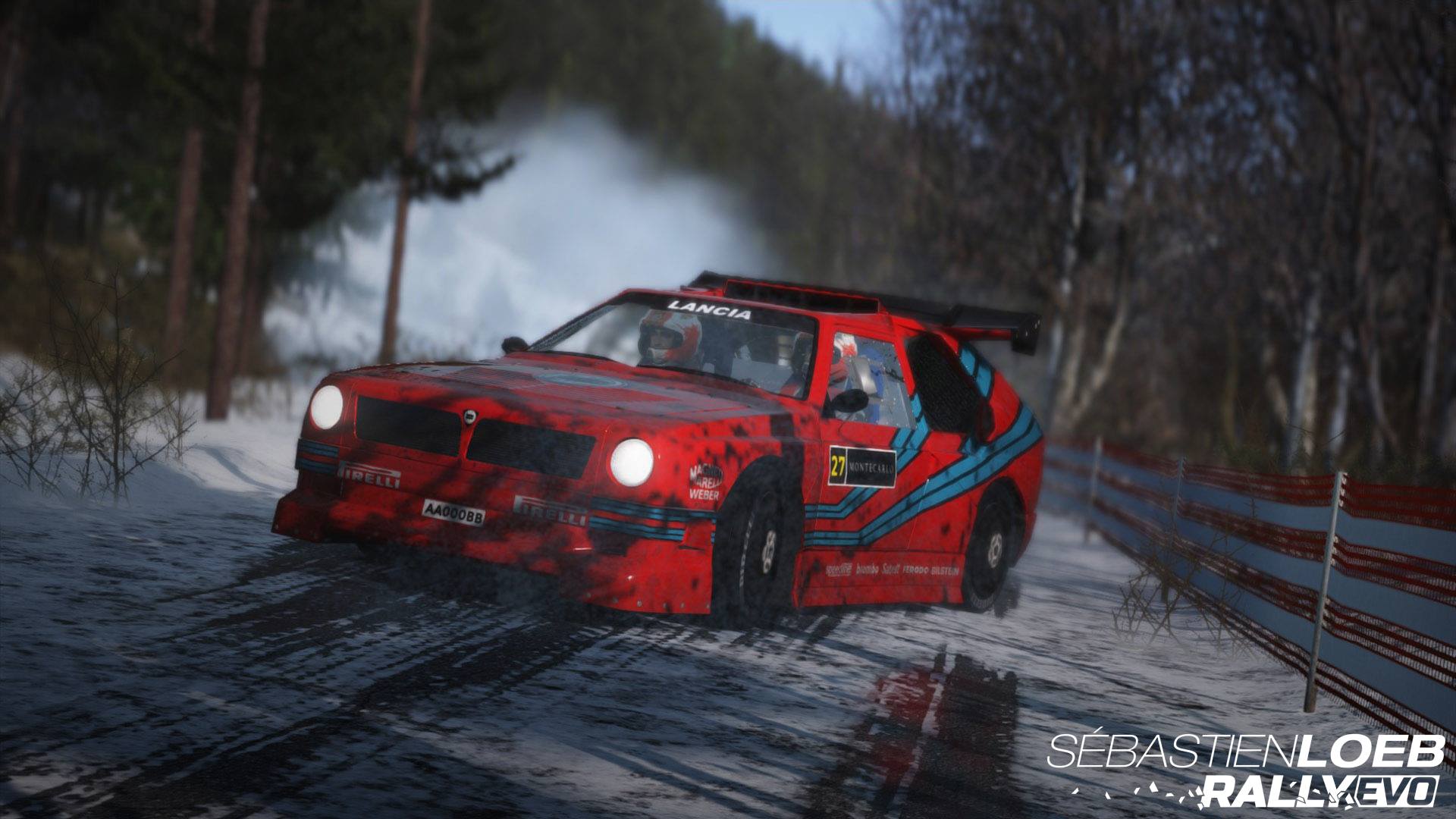
Sébastien Loeb EVO’s comprehensive career mode tries its best to emulate the flamboyance of Gran Turismo and Forza Motorsport, right down to the earnest narrator introducing you to each car class. In truth, the career structure is near-identical to Ride, presenting you with an overwhelming number of events split into categories with car class restrictions. Unfortunately, Sébastien Loeb Rally Evo has also inherited Ride’s gratingly long loading times, with some stages taking several minutes to load up.
You play as a rookie rally driver hand-picked by Sébastien Loeb as you climb the fictional world rankings in a championship where every other driver’s position stays static as you rank up regardless of where they place in events, weirdly. Reaching certain rankings unlock special Sébastien Loeb events which culminate in you participating in the 2016 Pikes Peak in a head-to-head battle against Sébastien Loeb himself. How you get there is entirely up to you, however. Sébastien Loeb Rally Evo’s career mode is versatile, allowing you to carve your own path and dip into whatever discipline you fancy as long as you have enough credits to buy eligible cars for each championship, with a handful of cars also available to rent (conversely, you’ll earn less credits if you choose to rent a car).
Starting in a nimble Peugeot 106, you don’t have access to every car from the start (even the single event mode only has a small handful of cars available to rent), but achieving gold medals in events gives you generous cash rewards, so it doesn’t take too long too long until you can afford the faster cars. You always feel like you’re progressing in Sébastien Loeb Rally Evo’s career, and there’s no unnecessary XP system forcing you to grind away in cars you have no desire to drive just to unlock events. It’s a great balance of freedom, whilst still giving you something to aim for as you rise the world rankings to get invited to Sébastien Loeb’s Pikes Peak event. With so many events to complete, the vast amount of content in the career will potentially keep you busy for months to come.
Success story
Fans of the man himself will find the standalone Sébastien Loeb Experience the most engaging mode. Essentially, this is Sébastien Loeb Rally Evo’s equivalent to MotoGP’s Real Events, allowing you to re-enact key highlights from Sébastien Loeb’s successful career over 18 years. Divided into several chapters representing different eras of Sébastien Loeb’s career, the Sébastien Loeb Experience takes you on a journey starting from his humble beginnings in the late nineties where he first entered the Citroen Saxo Trophy series, right up to his record-setting victory at Pikes Peak in 2013 where he retired from rallying at age 39.
As you would expect, these events are incredibly tough and represent some of the hardest events in the game. Tasking you with replicating the performance of the nine-time champion, objectives often stretch beyond simply finishing in first place, challenging you to set the fastest time in every sector or achieve an average speed of 100 mph. Don’t let the difficulty put you off, though, as beating all challenges in a category will reward you with a garage full of the Citroens that Sébastien Loeb drove to victory, which is by far the quickest way to acquire some of the fastest cars in the game. It’s worth noting that all events are unlocked from the start with the exception of the Pikes Peak chapter which is unlocked when you have completed every one of the 27 events in Sébastien Loeb Experience.
Each chapter is preceded with a documentary-style video interview with Sébastien Loeb himself featuring rarely seen photos, videos and some interesting insights into his career which fans will appreciate. Some of Loeb’s personal accounts of events are eye-opening; particularly his reflections on how he had to sacrifice winning the driver’s title in favour of securing the manufacturers title for Citroen in 2003. The interviews are frank, engaging and informative, but also rather long, so you might want to skip them unless you’re a die-hard fan of Sébastien Loeb. Doing so will mean you’ll miss out on learning about his fascinating career and likable persona, though. Having said that, the dry, deadpan dubbing in the English version will probably make you reach for the skip button anyway.
The excellently executed Sébastien Loeb Experience deserves praise for achieving something you don’t see often in racing games: it’s a very rare example of racing game narrative that enhances the experience without being obtrusive, providing context to the events that a simple text description can’t achieve. What could have been a throwaway mode turns out to be the highlight of the game that sets it apart.
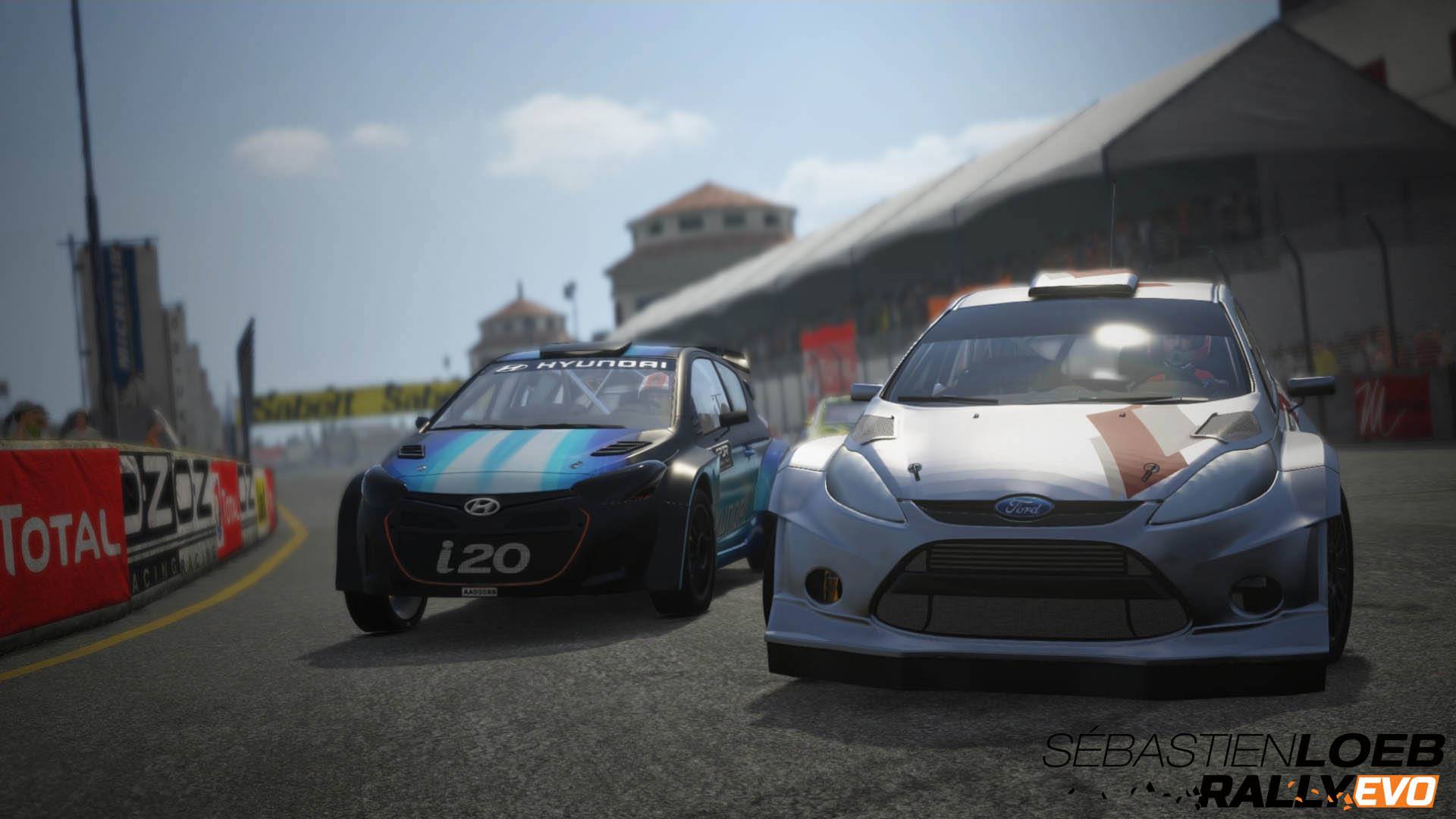
And just when you thought Milestone couldn’t possibly cram any more content into Sébastien Loeb Rally Evo, they throw in Rallycross and Hillclimb events in an effort to fully represent Sébastien Loeb’s diverse career (an approach we’re about to see repeated in Valentino Rossi: The Game which will feature rallycross in addition to bike racing). Set across five locations, the competitive off-road racing Rallycross events provide a welcome diversion from the lonely time trial treks of point-to-point rallying thanks to the challenging courses with mixed terrain and some ruthless AI competitors, although the rallycross cars are quite skittish to handle.
Pikes Peak takes centre stage in Sébastien Loeb Rally Evo’s harrowing Hillclimb events. The notorious 12 mile track has been faithfully recreated in its modern-day paved incarnation, but it’s a shame to see the original gravel version has been relegated to DLC. Climbing to the top is exhilarating and a serious test of your skills without the aid of a co-driver, particularly if you happen to be taming Sébastien Loeb’s record-setting Peugeot 208 T16 which famously blitzed the Pikes Peak Hillclimb in just 8 minutes and 13.8 seconds.
If that wasn’t enough, there are a few other modes to shake things up. There are traditional Elimination events where the driver in last place is eliminated from the race at regular intervals as you race against the clock, as well as Sector events which reward drivers who set the fastest times in each sector of the circuit and Gateway challenges have you passing through checkpoints placed in one of three gates to test your reactions.
Then there’s the online multiplayer, in which up to six players can compete in rally or rallycross events. There’s nothing particularly remarkable here: time trial rallies have you racing against player ghosts, and matches are set up in traditional lobbies with a player voting system to decide on stages and weather conditions, so you’ll spend a lot of time waiting for other players. I didn’t experience any lag in my playthroughs, but the available game selection was sparse, which suggests that Sébastien Loeb Rally Evo hasn’t developed a very active online community. Online leagues or daily challenges could have improved its lasting appeal – it’s certainly a far cry from WRC 5’s thriving online eSport league.
If you couldn’t already tell, Sébastien Loeb Rally Evo is bursting with content, making it the most comprehensive rally game in years.
Rough around the edges
It’s a shame that, like the majority of their titles, Milestone’s lofty ambitions don’t match their limited budget. Sébastien Loeb Rally Evo is by no means an ugly looking game, but it’s not quite the visual step up from the last-gen WRC series you would expect – considering this is Milestone’s first game to be developed exclusively for the current-gen consoles, Sébastien Loeb Rally Evo looks decidedly last-gen, which is probably the compromise that had to be made in order to build longer stages. Texture quality varies across locations, but the overall visual presentation is underwhelming, particularly with the environments which look bland, flat and lacking detail in places. Car models don’t fare much better either: there’s plenty of detail in the modelling (with the exception of dashboards which look too bare), but the artificial-looking lighting takes the shine off them.

Sébastien Loeb Rally Evo also suffers from a poor sense of speed: you never quite feel like you’re driving on the edge which detracts from the overall thrill factor. The frame rate may be partially to be blame here – while Sébastien Loeb Rally Evo runs smoothly with the exception of a few densely populated areas, it doesn’t achieve 60fps like some of its competitors which is better suited to the precision driving required in a rally game. Shaky camera and blurring effects would also have helped the sense of speed and excitement; a tactic Evolution Studios applied to DriveClub to great effect despite only running at 30fps.
However, by far the weakest aspect of Sebasiten Loeb Rally EVO’s presentation is the abysmal audio. Engines sound artificial and hollow, (you can even tell that engine sounds have been repeated for some cars), exhaust backfires sound like someone rattling a tin can and the crash and surface sounds don’t sound realistic at all. There’s even a glitch where the in-car sound uses the exterior car sound effects until you skip through the viewpoints at least once. Of course, this is something that should be fixable in a patch, but Milestone aren’t exactly renowned for their post-release support.
It’s the little flourishes that add all-important immersion to the experience: the gravel hitting the car, the cheering crowds; all of which are lacking in Sébastien Loeb Rally Evo. Once again you’re left with the same sterile atmosphere that still plagues many of Milestone’s games. After the progress made in WRC 4, it’s disappointing to find that Sébastien Loeb Rally Evo’s audio design falls far behind the competition. Even last year’s WRC 5 arguably has better engine sounds, despite being developed by a new team from scratch who have significantly less experience with rally games than Milestone.
The co-driver, on the other hand, provides clear and concise commands, but sounds far too chilled, acting as if he’s on a relaxing Sunday drive rather than a high speed rally. Even if you have a spectacular accident, he maintains complete composure no matter how much you put their life in danger. My other gripe is that the co-driver also fails to warn you against corner hazards – many times I cut a corner to shave off some time only to slam into a trackside object.
Milestone have a frustrating habit of releasing their games at the worst possible time, often colliding directly with the competition. Unfortunately, the same is true for Sébastien Loeb Rally Evo. Indeed, it’s impossible to ignore the elephant in the room that is DiRT Rally, especially now that it’s available on console. Suffice to say, Sébastien Loeb Rally Evo would probably have been better received if it had met its original release date last year away from the competition.
Comparisons between Sébastien Loeb Rally Evo and DiRT Rally are therefore unavoidable. You only have to scour certain corners of the internet to find heated debates over which game is superior, but in all honesty both games have their strengths and weaknesses. DiRT Rally undeniably has better graphics and audio, but Sébastien Loeb Rally Evo makes up for these shortcomings with its sheer breadth of fan-pleasing content and deep driving physics. It’s taken some unfair flack, frankly, yet Sébastien Loeb Rally Evo has still managed to build up a respectable fanbase amidst the scornful comments lurking on online forums. Just because it doesn’t have the brand recognition of the DiRT series doesn’t mean you should write it off. Here’s hoping people look back fondly on Sébastien Loeb Rally Evo in years to come the same way they do with Richard Burns Rally.
Sébastien Loeb Rally Evo is a mixed bag overall, let down by dated graphics, poor sound and a frustrating difficulty level that won’t be for everyone.
As a spiritual successor to Richard Burns Rally however, Sébastien Loeb Rally Evo succeeds in spades. Despite its flaws you have to commend Milestone – releasing a new hardcore rally IP was a brave move, and while the gamble hasn’t entirely paid off, Sébastien Loeb Rally Evo is easily their most ambitious game to date.
If you can look past its subpar presentation, Sébastien Loeb Rally Evo is a rewarding rally game with deep driving physics, authentic stages and an ample amount of content that rally enthusiasts will relish.
Our Review
Summary
Sébastien Loeb Rally Evo is a mixed bag overall, let down by dated graphics, poor sound and a frustrating difficulty level that won’t be for everyone. As a spiritual successor to Richard Burns Rally however, Sébastien Loeb Rally Evo succeeds in spades. Despite its flaws you have to commend Milestone – releasing a new hardcore rally IP was a brave move, and while the gamble hasn’t entirely paid off, Sébastien Loeb Rally Evo is easily their most ambitious game to date. If you can look past its subpar presentation, Sébastien Loeb Rally Evo is a rewarding rally game with deep driving physics, authentic stages and an ample amount of content that rally enthusiasts will relish.



